

Antonio Vivaldi
Sinfonia h-Moll „Al Santo Sepolcro“ (RV 169)
Duration: 4'
Bearbeitung: Gisler/Rahbari
Instrumentation details:
flute
flute
alto flute
alto flute
bass flute
contrabass flute in C
Sinfonia h-Moll „Al Santo Sepolcro“ (RV 169)
Translation, reprints and more
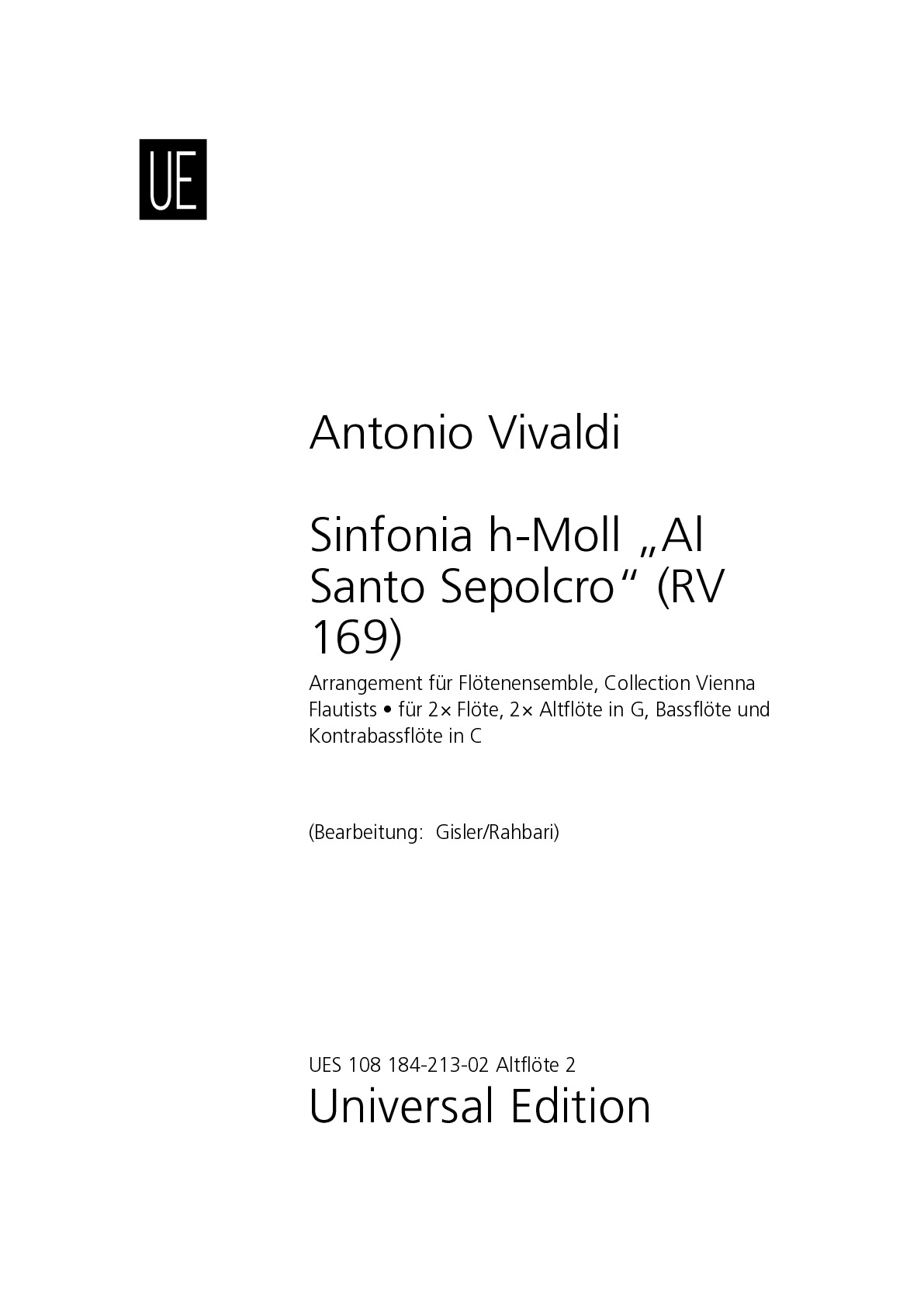
Antonio Vivaldi
Altflöte in G (Sinfonia h-Moll „Al Santo Sepolcro“ (RV 169))Type: Stimme

Antonio Vivaldi
Altflöte in G (Sinfonia h-Moll „Al Santo Sepolcro“ (RV 169))Type: Stimme
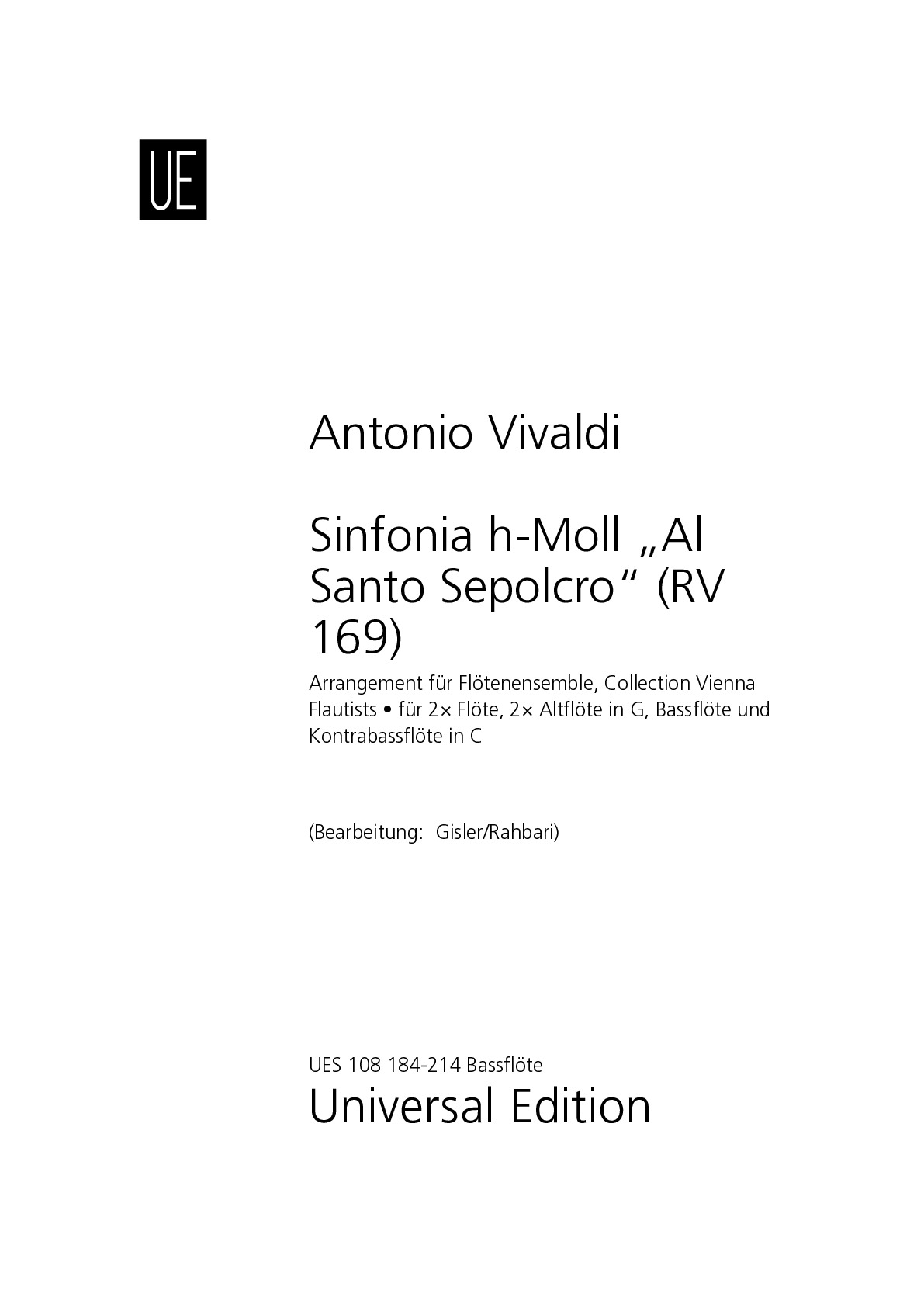
Antonio Vivaldi
Bassflöte (Sinfonia h-Moll „Al Santo Sepolcro“ (RV 169))Type: Stimme
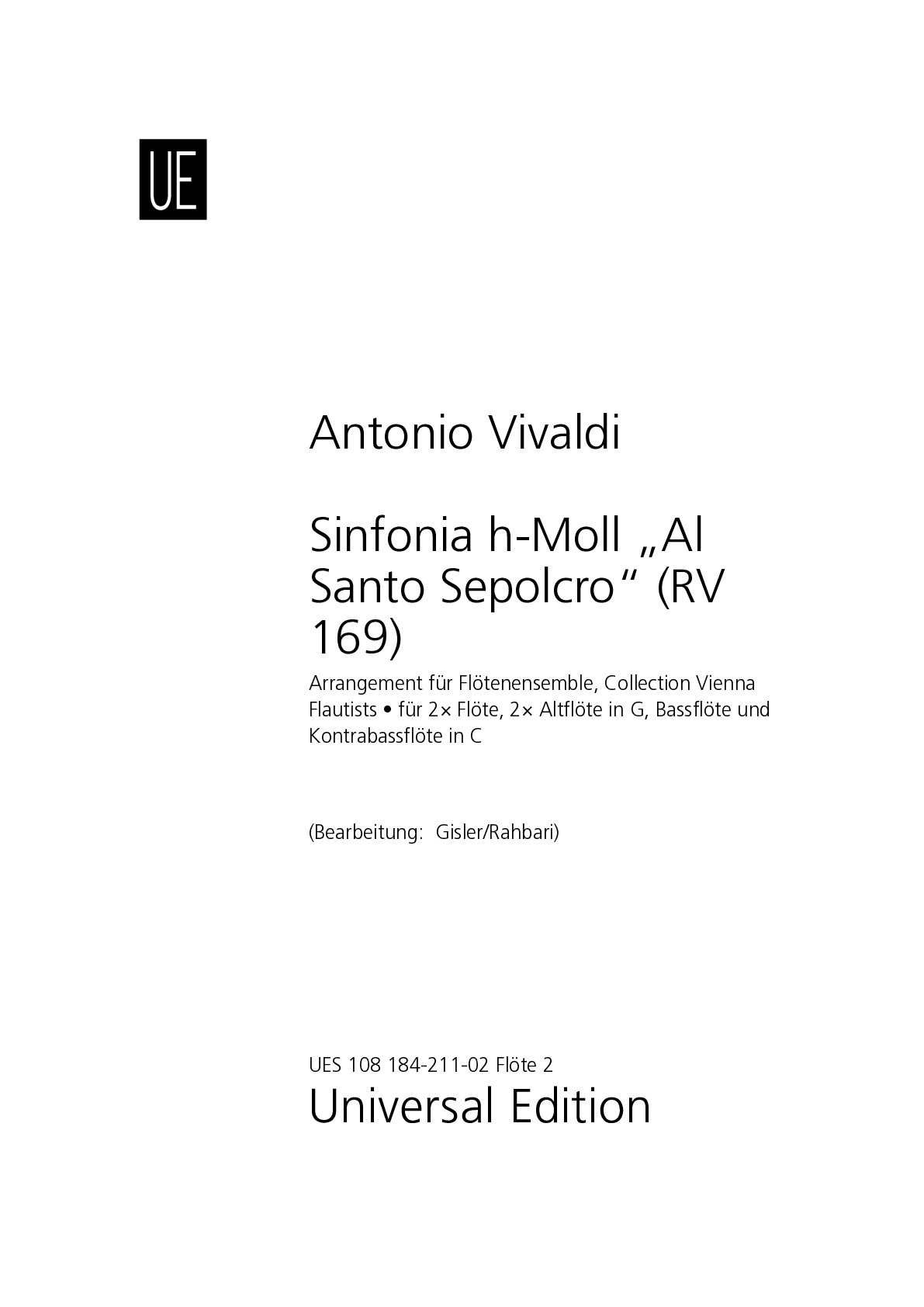
Antonio Vivaldi
Flöte (Sinfonia h-Moll „Al Santo Sepolcro“ (RV 169))Type: Stimme
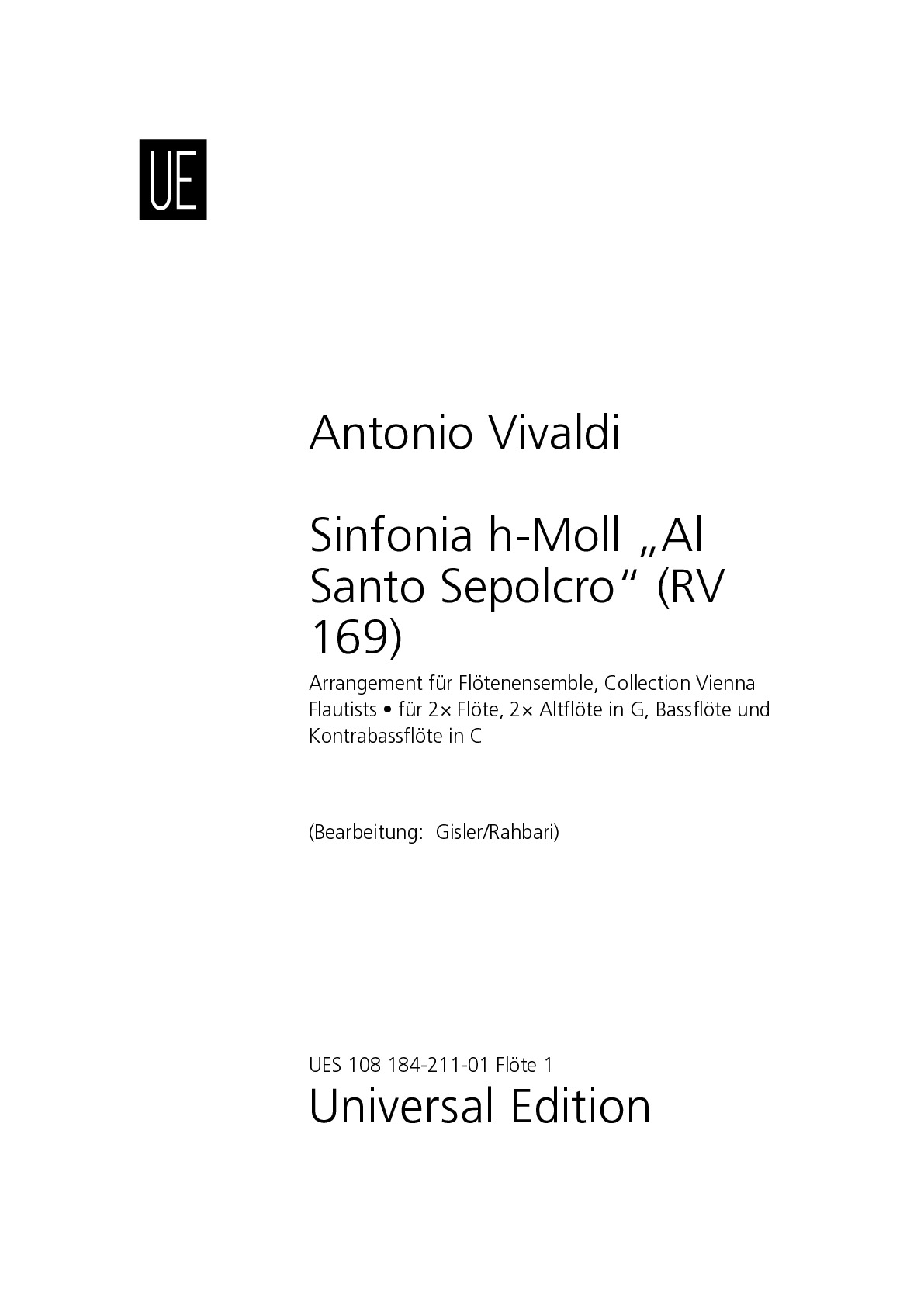
Antonio Vivaldi
Flöte (Sinfonia h-Moll „Al Santo Sepolcro“ (RV 169))Type: Stimme
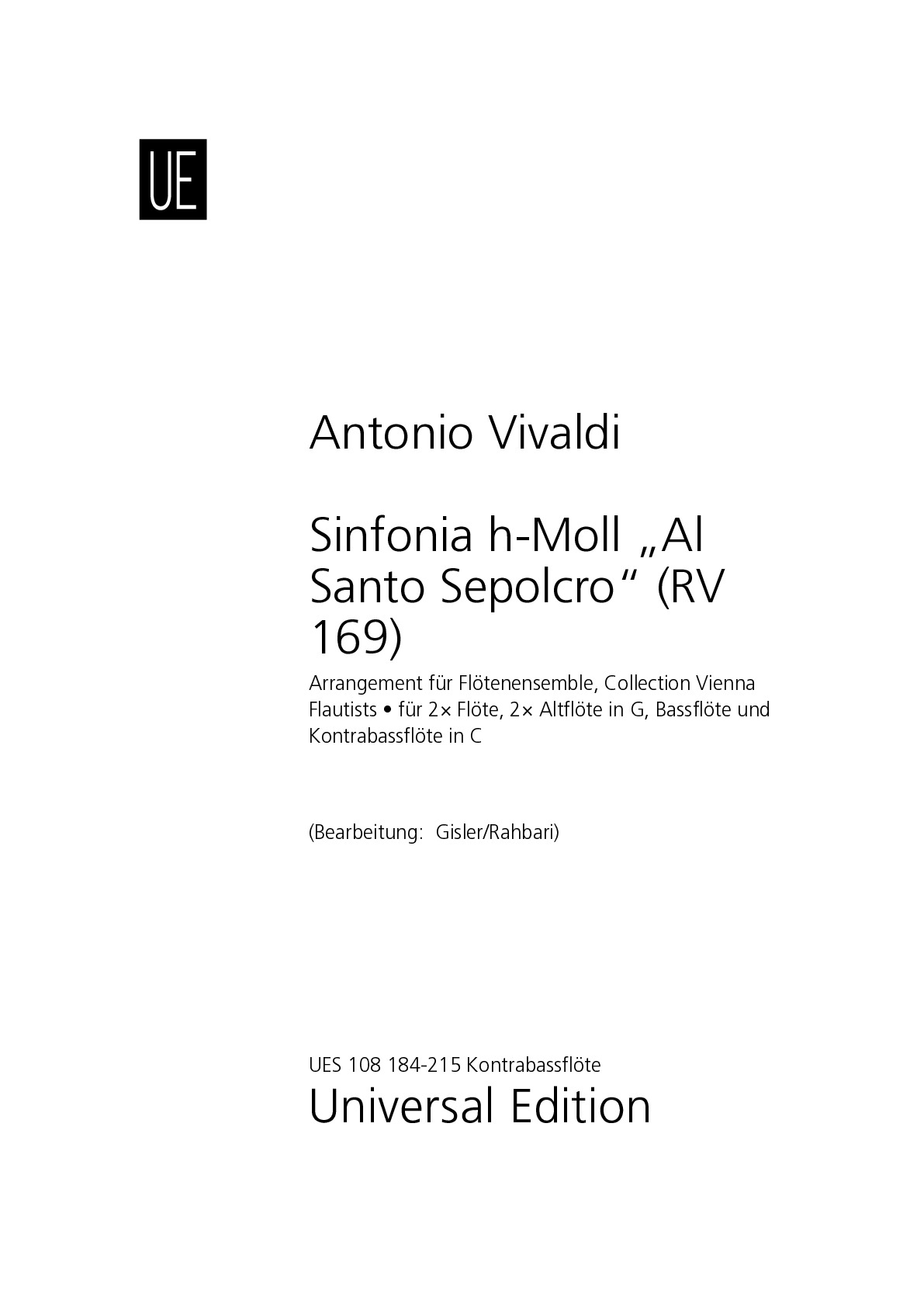
Antonio Vivaldi
Kontrabassflöte in C (Sinfonia h-Moll „Al Santo Sepolcro“ (RV 169))Type: Stimme
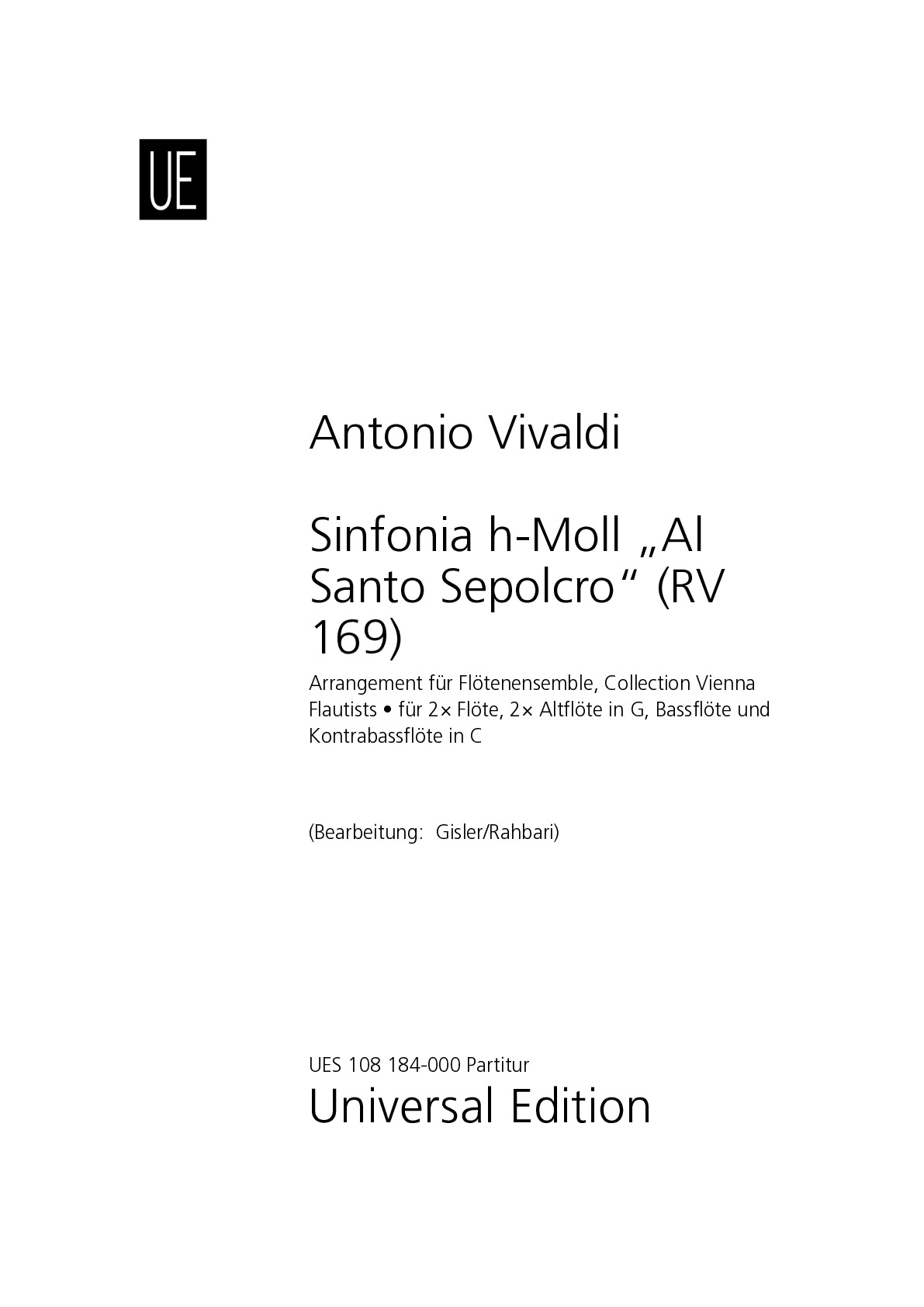
Antonio Vivaldi
Sinfonia h-Moll „Al Santo Sepolcro“ (RV 169)Type: Dirigierpartitur
Sample pages
Audio preview
Work introduction
When Vivaldi arrived in Vienna in 1740, the emperor, to whom he owed so much, died shortly afterwards.
The Sinfonia Santo Santo Sepolcro is intended as a tribute to this sad end, but also as a reminder of religious customs that were common during Holy Week both in Vienna and in Italy.
A sombre Adagio with recumbent dissonant chords followed by an Allegro stands in great contrast to the otherwise extroverted manner of Vivaldi's concertos.
Translated with DeepL.com
What is necessary to perform this work?
The double bass part is available in two versions.
The upper system is a playing recommendation for performance by a double bass flute. This part is notated as sounding.
It is recommended that the contrabass flute is mainly used in the non-overblown register.
The tonal combination of a bass flute with the contrabass flute produces a homogeneous bass sound.
The system below reproduces the original text of the score and serves as a guide or for reproduction by a bassoon or other bass instruments
Translated with DeepL
